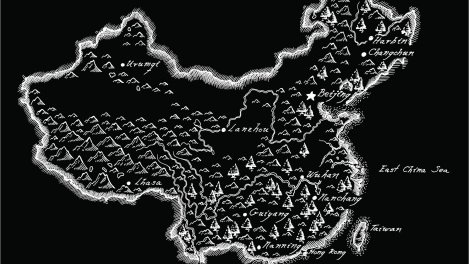Elizabeth Canon of Fashion’s Collective investigates retail expansion strategies in China’s growing Tier 1, 2 & 3 Cities

Elizabeth Canon of Fashion’s Collective investigates retail expansion strategies in China’s growing Tier 1, 2 & 3 Cities
Elizabeth Canon of Fashion’s Collective investigates retail expansion strategies in China’s growing Tier 1, 2 & 3 Cities
There’s been much industry talk lately about China’s growing Tier 2 and Tier 3 cities, and the decline of luxury spending in Tier 1 cities. Taken at face value, the data and reporting might lead a luxury brand to rethink and revise their expansion strategy. However, doing so without a deeper understanding of the market would be a costly mistake.
As is always the case with data, using it to make informed decisions requires a further level of analysis, in particular a look at people’s actual behavior. Digital Luxury Group, a international company helping brands form and execute digital strategies in key global markets (including China), has conducted extensive research on the search behavior within China.
Their findings indicate that in western China, largely comprised of Tier 3 cities, people are searching for luxury brands at an increased rate of 8.4%, compared with just 4.8% in the eastern Tier 1 cities including Shanghai and Hong Kong. This directly shows the growth of an aspirational consumer base in the west, compared to a slow down in the coastal region.
“ In Western China, largely comprised of Tier 3 cities, people are searching for luxury brands at an increased rate of 8.4% ”
However, to assume that modifying an expansion strategy to open stores in Tier 2 and 3 strategies, rather than the more costly Tier 1 cities, in order to test the market with a lower investment, would be a mistake.
When we look at the behavior of Chinese luxury consumers, they are a group that travels explicitly to make purchases. Not only are they seeking validation of authenticity and lower prices, but they are seeking the status that comes with travel.
In fact, in 2011 there were 70 million outbound trips from China, with nearly 75% of these travelers making luxury purchases abroad. For the current Chinese luxury consumer, traveling to Hong Kong, the United States and Europe (the most popular travel destinations for affluent Chinese), the swelling middle class Chinese will travel domestically at increasing rates to Tier 1 cities.
“ In 2011 there were 70 million outbound trips from China, nearly 75% of these travellers made luxury purchases abroad ”
This middle class is especially significant to almost all fashion and luxury brands. Research shows that this mainstream consumer, (identified as those earning RMB 106,000 – 229,000 per year, roughly $17,000 – $38,000 USD), will grow to represent over 50% of the entire Chinese population by the year 2020 (McKinsey). This, a group that is already trading up on luxury purchases and lives mainly in Tier 1 and Tier 2 cities.
If the brands these mainstream consumers have been influenced by are not present at the brick and mortar level in these destinations, a disconnect will occur, making it imperative for brands expanding into China to do so first and foremost in Tier 1 and Tier 2 cities before opening subsequent locations in Tier 3 cities.
For brands who entered first in Tier 1 and Tier 2 cities, and then afterwards in Tier 3 locations, it’s possible the Tier 3 locations might actually outperform Tier 1 and 2 locations.
However, for the brands looking to minimize short-term investment risk by opening first in Tier 3 cities, this strategy does not necessarily align with behavior and aspirations in China, and can therefore be a high risk strategy in the long term.
Ultimately, understanding the local consumer, how they think, behave and buy remains a paramount filter through which to perceive and analyze the growing amount of research on the Chinese market.
To further investigate the Chinese luxury industry on Luxury Society, we invite your to explore the related materials as follows:
– Chanel Overtakes Louis Vuitton in Chinese Share of Search
– Luxury Watch Market A Crucial Factor In Swiss-China Trade Talks
– What Is Really Behind China’s Luxury Slowdown?










